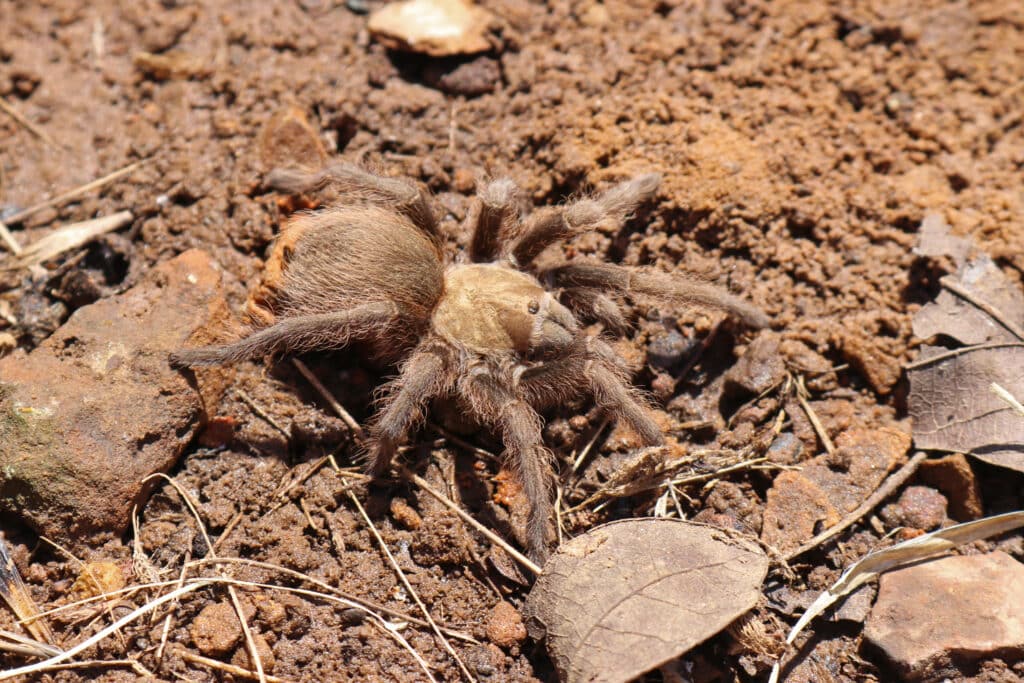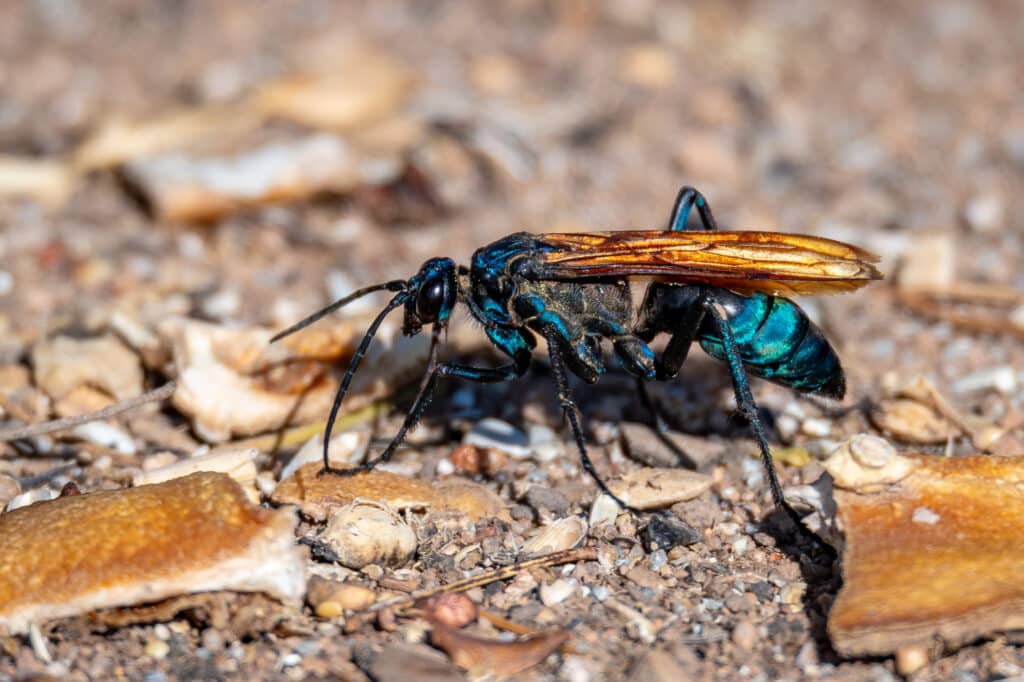Northern Coloradans may not realize it, but our state is home to a particularly large (and often irrationally feared) species of spider: the Texas brown tarantula (Aphonopelma hentzi). Despite their foreboding appearance, they are among the most docile of tarantulas found in the Americas, posing little threat to humans or pets.
If that brings you no comfort in Greeley or Fort Collins, remember that these tarantulas are not found north of the Palmer Divide, a ridge between Castle Rock and Colorado Springs. Even in southern Colorado, there is little to fear from a pest control standpoint—these spiders are mostly concentrated in the Comanche National Grassland and other empty stretches of prairie.
Still, the fact that this occurs in Colorado is a wonderful reminder of the incredible biodiversity of our state, and as Bug Control Specialists, even we like to nerd out every once in a while. So here’s our take on Colorado’s great tarantula “migration.”
Migration—Or Creepy Crawly Courtship?

Every fall, thousands of male Texas brown tarantulas can be seen scurrying across the grasslands and roads of southeast Colorado, on their way to court female spiders in their burrows. While the large number of spiders on the move has led observers to commonly call this a “migration,” the spiders aren’t leaving one region to settle in another, but males are instead wandering en masse searching for mates.
These males are signalled to leave their burrows by declining nighttime temperatures in the last weeks of August and first weeks of September. This journey will mark the end of the life cycle of the male brown tarantula—while females can live for as long as 40 years, males only live about one year, which makes this wandering courtship the most important event of their lives, their only chance to pass on their genes.
When a male enters a female’s burrow and successfully persuades her to mate, the female then consumes the male to sustain her for the ensuing period, where she lays and looks after up to 1,000 eggs, suspended in webs around the burrow.
What’s Creepier: Tarantulas or Spider-Eating Wasps?

Of course, even very large spiders have their predators, and whenever these male brown tarantulas brave the surface in search of a mate, plenty of birds, mammals, and even other insects jump at the chance to nab an easy meal. Foxes, snakes, and coyotes are among these predators, but are often repelled by the tarantula’s defensive fling of irritating hairs.
However, given the option, most tarantulas would gladly choose to be gobbled up by a fox or snake instead of being subjected to the awful whims of the tarantula hawk. This terrifying predator is not a bird but a massive black wasp. Adult tarantula hawks do not prey on tarantulas themselves; instead, females use the spiders as live hosts to nourish their young.
They do this by first stinging a brown tarantula between its leg joints, avoiding the spider’s exoskeleton armor. This paralyzes the spider, and the wasp then drags it to a special burrow, where it lays a single egg on top of the spider and covers the burrow entrance with dirt. In 3-4 days, the wasp larvae hatches from the egg and begins devouring the still-paralyzed spider alive, from the inside, careful to avoid vital organs until the very end so its meat remains fresh.
Oh, and while it won’t paralyze a human, the sting of a female tarantula hawk (males cannot sting) is rated as the second-most painful insect sting in the entire world, behind only Australia’s bullet ant. So, while you may not have anything to fear from the tarantulas themselves, these wasps are definitely to be avoided at all costs.
Range Expanding?
While normally most prevalent in the southeastern part of the state, Texas brown tarantulas have been found as far north as Pueblo West, and northern Colorado has even seen isolated specimens of the tarantula hawk—though these individuals were most often brought by wayward winds instead of the appearance of their prey. So, while there is no chance these creepy crawlies will come to Larimer or Weld counties anytime soon, there is a good chance that higher average temperatures will push these spiders—and possibly their wasp predators—a bit farther north as the years go on.
So that’s the long and short of Colorado’s famous tarantula “migration:” it lasts only a few weeks, terrifies some but fascinates many more, is an essential part of these spiders’ life cycle, and—like every one of nature’s gambits—renders its protagonists vulnerable to a host of excruciating deaths, whether from predators like foxes and wasps or just your average set of car tires.
On that last point, local authorities have considered building “tarantula tunnels” underneath roadways to help the spiders avoid ending up as pavement streaks. Whatever the future of this phenomenon holds, it will surely draw bug and nature enthusiasts to Colorado’s Arkansas Valley year after year.
Wildlife is Fascinating: But Not in Your House
At Bug Control Specialist, we respect and revere nature, just like most Coloradans. However, we understand there are some lines nature shouldn’t cross—namely the walls of your home. While you’re unlikely to have any tarantula problems in northern Colorado, we can help with common house spiders, black widows, or any other kind of creepy that’s crawling where it shouldn’t. Contact us today for a free estimate, and be sure to plan a trip down to southern Colorado next fall to check out one of the coolest natural phenomena our state has to offer.
